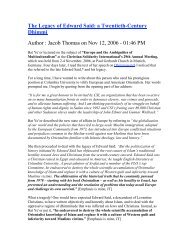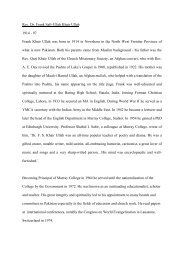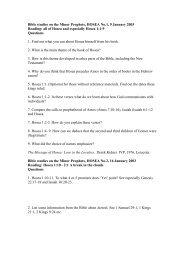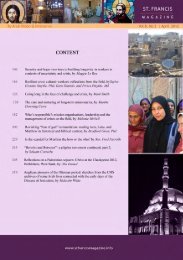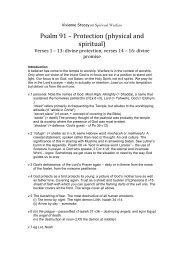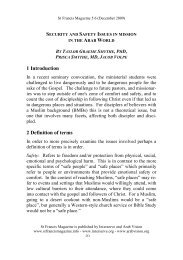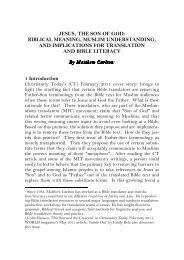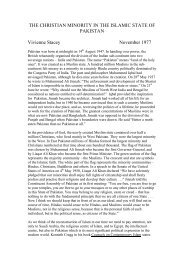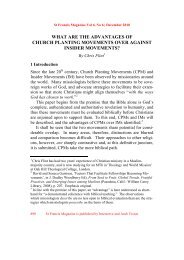download the pdf - St.Francis Magazine
download the pdf - St.Francis Magazine
download the pdf - St.Francis Magazine
Create successful ePaper yourself
Turn your PDF publications into a flip-book with our unique Google optimized e-Paper software.
<strong>St</strong> <strong>Francis</strong> <strong>Magazine</strong> Vol 8, No 4 | August 2012<br />
NEW TESTAMENT CHRISTOLOGY IS NICENE<br />
CHRISTOLOGY: AN ORTHODOX PERSPECTIVE<br />
By Mina Fouad Tawfike 1<br />
freeorthodoxmind@gmail.com<br />
Abstract: In his book The Jesus Papers: Exposing <strong>the</strong> Greatest Cover-Up<br />
in History, Michael Baigent states that <strong>the</strong> aim of <strong>the</strong> Council of<br />
Nicaea‘was to get support for <strong>the</strong> idea that Jesus Christ was “of one being”<br />
with God <strong>the</strong> Fa<strong>the</strong>r, a claim that Arius and o<strong>the</strong>rs disputed; for <strong>the</strong>m,<br />
Jesus was not divine’ (p. 83). Princeton’s Elaine Pagels dryly observes:<br />
“Those who opposed this phrase pointed out that it occurs nei<strong>the</strong>r in <strong>the</strong><br />
Scriptures nor in Christian tradition” (Beyond Belief, p.173). In this<br />
paper I will argue that such ideas, which argue that Christ was deified in<br />
<strong>the</strong> Council of Nicaea, are incoherent and indefensible. They completely<br />
ignore three centuries of written tradition (writings of <strong>the</strong> Fa<strong>the</strong>rs, <strong>the</strong><br />
New Testament, tombstones and songs of praise) and oral tradition (which<br />
is shown in <strong>the</strong> liturgical practices), of both which completely support<br />
Nicaea.<br />
1 Jesus Christ: A Deified Man, Or An Incarnate God<br />
Baigent, Pagels and o<strong>the</strong>rs suggest that Christ's so-called Nicene<br />
deification was due to <strong>the</strong> direct effect of <strong>the</strong> Greco-Roman civilization,<br />
especially on <strong>the</strong> Jewish culture in Palestine. The evidences<br />
provided for this idea are <strong>the</strong> characteristics or properties given to<br />
<strong>the</strong> Roman emperors, like “<strong>the</strong> god”, “<strong>the</strong> lord”, and “<strong>the</strong> giver”. For<br />
instance, in an inscription dating back to <strong>the</strong> third century BC we<br />
read, “Ptolemy <strong>the</strong> savior and god: <br />
.” We may see various inscriptions and texts that give <strong>the</strong><br />
same meaning and <strong>the</strong> first question we pose is, could <strong>the</strong>se ideas<br />
1 Mina is a freelance writer, blogger and teacher of Patristics at Alexandria School<br />
of Theology. He is a member of <strong>the</strong> Coptic Orthodox Church. You can visit his<br />
blog at www.freeorthodoxmind.org.<br />
<strong>St</strong> <strong>Francis</strong> <strong>Magazine</strong> is a publication of Interserve and Arab Vision 442


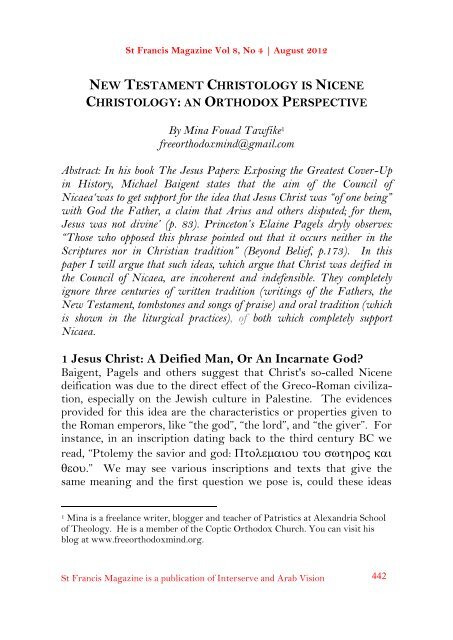

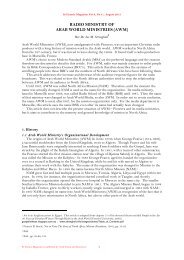
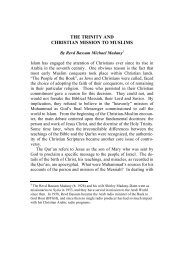
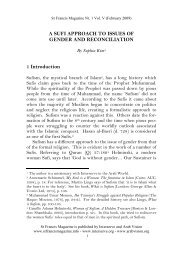
![Reflections on Surah Fatiha and the Lord's Prayer[1] - St.Francis ...](https://img.yumpu.com/49377951/1/184x260/reflections-on-surah-fatiha-and-the-lords-prayer1-stfrancis-.jpg?quality=85)
